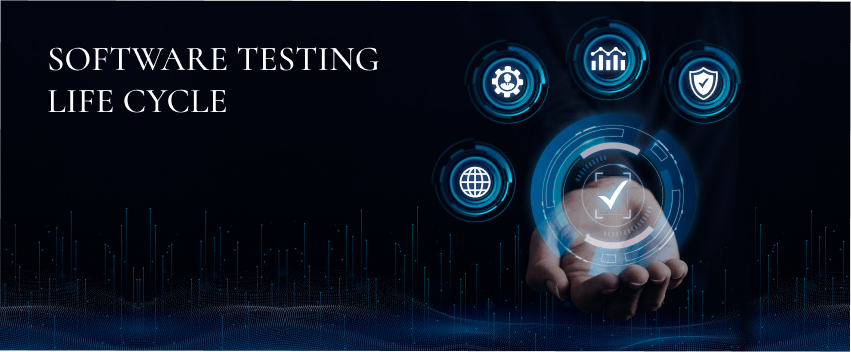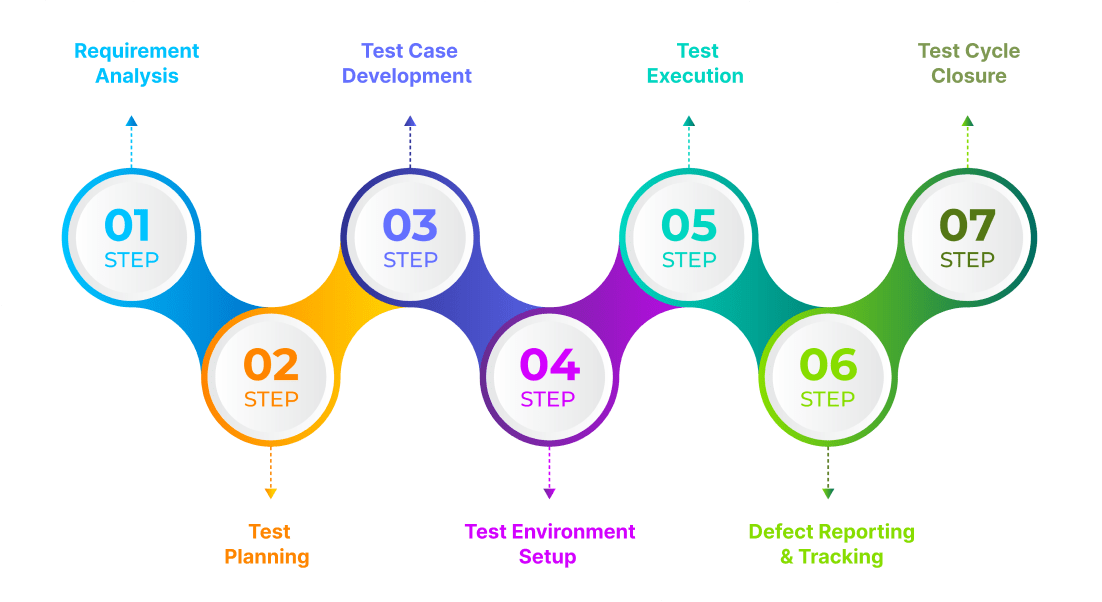Building a Secure Spring Boot...
November 4, 2025

What is important for one to know is that the Software Testing Life Cycle (STLC) is a well-defined methodology that makes it possible for software applications to conform to the highest standard of quality and functionality.
Well, using large experience in the creation of various software products, we always applied the STLC to identify and resolve fundamental problems during the development state.
Let us then take you through the STLC bearing in mind that it forms a core part of any software development process to produce release-ready software that is robust and of superior quality.
Software Testing Life Cycle (STLC) is a sequential process that helps to ensure that the developed software conforms to the standard levels and functions.
This cycle may involve steps like requirement analysis, test planning, test cases and design, Test Environment Setup, testing and reporting, and test closing. Each phase contains its own entry and exit conditions with the goal of providing a systematic view of testing.
Based on our exposure, the basics of the STLC must be learned so as to detect error sources and resolve them before a software release is made. This does not just serve the purpose of improving reliability and quality but also increases productivity throughout the software development end-to-end development process.
The Software Testing Life Cycle has immense importance in the System Development Life Cycle (SDLC) since it encompasses activities that improve the quality of the developed software. We used the format of SDLC at the start of the development experience and shifted focus toward the development process by referring to STLC.
Also Read: Explore the System Development Life Cycle and Phases
While the general goals of both SDLC and STLC are similar, the former is used at a different phase of the development process than the latter. When adopting the STLC into the SDLC, there is a way of verifying and validating the software development process to tackle issues as early as possible.
STLC belongs to the larger category of SDLC wherein software receives a comprehensive check before it is released. Precisely, we can distinguish that SDLC aims at a wider view of the software development life cycle and STLC is a part of it that is oriented chiefly on the testing process.
Also Read: Wireframing for Building Inclusive Websites and Apps
Software Testing Life Cycle is divided into functional different stages, which are followed by a clear list of goals and expected outcomes. Let’s explore each phase in detail:

Software development starts with requirement gathering or requirement specification. Knowing the functional and non-functional requirements, functional and non-essential specifications, and the required system flow, we make the design specifications comprehensible. This leads to intensive detailed testing, which is a way of guaranteeing that the final product will be a good one, able to meet all client or stakeholder requirements.
Example: Suppose you are considering an e-commerce application that lets users search for products, place these products in the cart, and even make purchases. In the requirement analysis phase, the testing team would have gathered the functional requirements like searching for a product, how to add it to the cart, and finally checking out amongst others. They would also define non-functional requirements such as performance, security, and usability.
Based on the outcomes of the requirement analysis, the QA strategy is determined. We decide whether something can be tested automatically or has to be tested manually; we note all these things down comprehensively. Specific tasks are assigned together with the timeline for the entire project and for each employee; detailed test cases are designed to provide complete coverage of the test phase.
Example: In the case of an e-commerce application, the test plan would for instance indicate the coverage in terms of testing such as the functional and non-functional. This lays down the identification of the testing tools that will be used, the identification of the testing team and their functions, the time frame within which test cases will be developed, and the test script and execution plan. It would also look at emerging threats like the failure to access the test environment in time and the measures to employ to counter the given threat.
In this stage, test cases are not executed; instead, they are designed according to the test plan and ISQTB standards. The major parameters include test case title, priority, severity, type of testing, test case steps, pre-conditions, post-conditions, and the expected final result.
Example: In testing the specific search field in the e-commerce application, test cases would include; search by name, search by category, and search by price. Every one of them would describe the input data, the actions to be performed as well as the expected outcome. Specifically, the test data would be generated to cover all the search activities that a user can undertake.
They involve configuring the hardware, software, and the network which is to be used in the testing process. Smokes assure the system’s preparedness for heavy testing; if some issues are observed on the way, they are marked for later elucidation.
Example: The test environment for the e-commerce application would encompass the creation of servers, databases, and computer networks among others. The applications which include the web server and the database server would be installed and set up. The environment would be checked to ascertain that it is similar to the real production environment.
To validate the system’s functionality, performance, and reliability against requirements, ensuring defects are documented and addressed, confirming readiness for deployment.
Example: While testing Execution, the test cases concerning the e-commerce application could be to focus on the search utility. Any imperfection in the search, for example, wrong search information or slow search response would be recorded in the defect tracking system. After the bugs are fixed, regression testing would be done then retesting to check the effectiveness of the fix and check for any new faults.
Defects are made for the identification, recording, and categorization of defects, according to their criticality in the process. To facilitate detailed reports, follow-step reproduction of the problem, and appropriate fixation; communication makes it clear who is expected to resolve the defect.
Example: In the e-commerce application, if a defect is found where the search functionality fails to return results for specific keywords, it would be logged in the defect tracking tool. The defect would be assigned to a developer, and its status would be tracked until it is resolved. Detailed reports would be generated to keep stakeholders informed about the defect status and progress.
We then go through all test cases to refer to and resolve all the defects. The final test results and test reports are generated and a test sign-off meeting share and review of learning. All documented records are kept for future use which is advantageous to the project and adds value to the quality of the project.
Example: Finally, after completing the test cycle of the e-commerce application, a test summary report will be generated that will list the test cases done and among them, the tests passed and failed. There would also be a section in the report indicating the defects that were observed and isolated as well as defects that were observed but dismissed. All in all, a test closure meeting would be conducted to evaluate the entire testing process, as well as reflect upon testing benefits, risks, and other useful information.
Also Read: The Stage Gate Process: Project Management Guide
Software Testing Life Cycle is crucial for several reasons:
To ensure the effectiveness of STLC, it’s important to follow the best practices:
Despite its benefits, STLC faces several challenges:
The future of STLC is shaped by emerging trends and technologies:
In Conclusion…Implementing best practices, overcoming challenges, and staying abreast of emerging trends will enable organizations to effectively manage their testing processes and deliver high-quality software products that meet user expectations and business requirements.